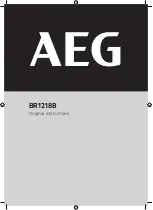
TM9456 Dual-Radio Installation and Programming Guide
11
© Tait Limited
July 2016
Preparation when Drilling Holes
Warning
When drilling holes in the vehicle, check that drilling
at the selected points will not damage existing wiring, petrol tanks,
fuel lines, brake pipes, or battery cables.
Vehicles Powered by Liquefied Petroleum Gas
Warning
Radio installation in vehicles powered by LPG (lique-
fied petroleum gas) with the LPG container in a sealed-off space
within the interior of the vehicle must conform to the National Fire
Protection Association Standard NFPA 58. This standard states
that the radio equipment installation must meet the following
requirements:
■
The space containing the radio equipment shall be isolated by
a seal from the space containing the LPG container and its
fitting.
■
Outside filling connections shall be used for the LPG
container and its fittings.
■
The LPG container space shall be vented to the outside of
the vehicle.
Non-standard Radio Installations
The installation U-bracket has been designed so that there is enough
airflow around the radio body to provide cooling.
If a non-standard installation method is used, care must be taken that
sufficient heat can be dissipated from the heatsink fins and the ridged
bottom surface of the radio.
For this to be achieved, there must be a gap of more than 3/8 inch (10 mm)
between the bottom surface of the radio chassis and the mounting surface.
This is illustrated in the following diagram:
10 mm (3/8 in.)
mounting surface












































